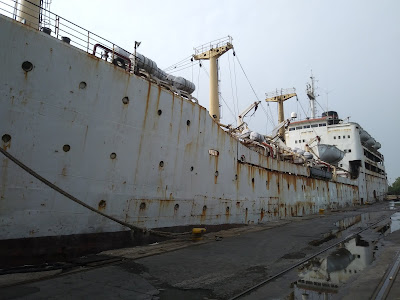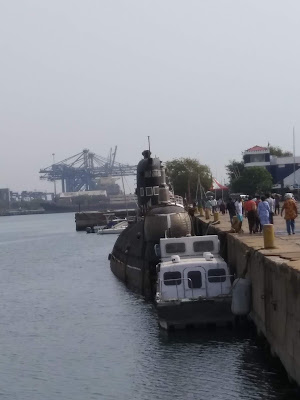The Historic Madras Harbour
In 2006 CE, the Chennai Port Trust celebrated its 125th year of formation. But the history of Madras harbor is much older.
The maritime trade started in 1639 CE along with the city's foundation. However, there was no natural or artificial harbor. The ships could only come within two miles of the coast. They had to stop at Madras Roads (yes, that's what it was called then) and offload all the materials. The transportation to the city would be through the catamarans and the masula boats.
In 1770 CE, a plan was to build a pier into the sea, but that was dropped when Warren Hastings was appointed Governor and Bengal and transferred to Kolkata. Almost after 90 years, probably due to the high loss of cargo while transporting through the boats, the initial piers were built in 1861 CE. The storms of 1868 and 1872 destroyed them. On 15th December 1875, the foundation stone for the commencement of Madras Harbour Works was laid by Edward VII, the Prince of Wales. (He was the eldest son of Queen Victoria). The foundation stone is still found on the harbor campus. The operation of this artificial harbor started in 1881.
The Black Town of Madras was renamed George Town after King George V visited India in 1911. When he was still a Prince, he visited the Madras Harbour. A stone in the Port remembers and records his visit on 24th January 1906 CE.
Not many would know that the Port runs its own railway operations. The railway lines run up to 41 km inside the harbor. They are for handling a wide range of cargo.
The great Mathematician, Srinivasa Ramanujan, was an employee of Madras Harbour. He worked as an accounting clerk for about one year from 1912 CE. His boss, Sir Francis Spring, and his colleague, Narayana Iyer, encouraged him in his mathematical pursuits. To remember him, his bust was installed inside the harbor in 1990.
A building built in the early 1900s in the art deco style of architecture has heritage value. It resembles the structure of the Connemara hotel.
A building built in the early 1900s in the art deco style of architecture has heritage value. It resembles the structure of the Connemara hotel.
The HPH sub-station runs in the oldest structure of the harbor. The building is found in the below image.
The Royal Madras Yacht Club is another historical place located within the Port. It was founded by Sir Francis Spring, the then Chairman of the Madras Port Trust, in 1911 as the Madras Sailing Club. After many shifts, the Club was ultimately relocated to its original place (Timber Pond). The Club building has a lot of old medals, artifacts, and photographs. Some of the photo frames which were damaged during the bombardment by the German cruiser Emden in 1914 are displayed in the Club.
Note: As I intended to cover only the sites of historical significance and heritage value in this article, I have yet to cover some generic information and other details related to the harbor.
The information covered in this article is based on my observations during my visit, the details from the official website of the Port, and the information gathered from the speech of Mr. Narasiah, the historian.
Happy travelling.
















.JPG)
I belive an ancestor of mine, Alfred Lee Pogson, was Construction Engineer for the harbour from 1881. He was the 4th son of Norman Robert Pogson, Government Astronomer in Madras/Chennai (from 1861-1891)
ReplyDeleteThat's a great info, sir. Thanks for sharing the same.
Delete